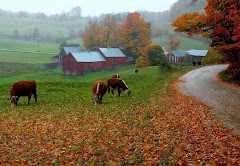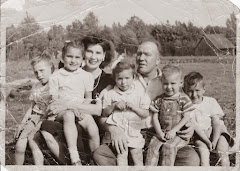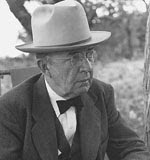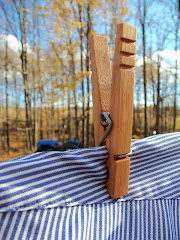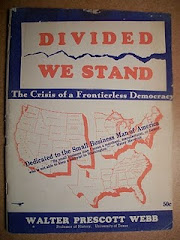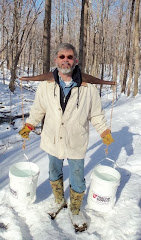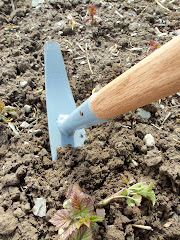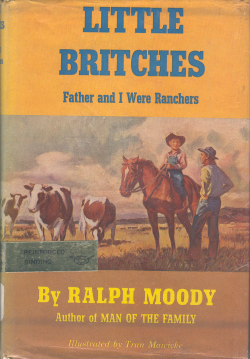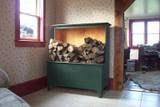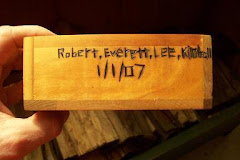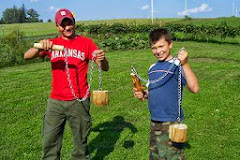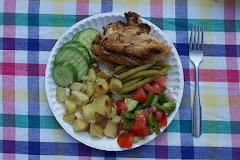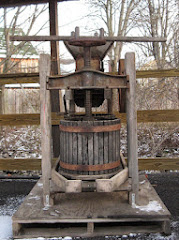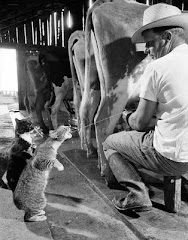[Dateline 22 September 2008]
We all know that the cost of everything is going up, including food. As a result, lower income households are hurting and middle class households are experiencing financial concern, if not yet hardship. People are looking for ways to save money. In this blog essay I’m going to introduce you to a remarkably simple, almost unheard of method of cooking. And I’m, going to tell you how to utilize this idea to make a very wholesome meal for very little money. I present this idea as a brilliant solution to a serious problem.
I wish I had thought of this idea myself, but I didn’t. I learned about it several years ago on the internet from a man named
Kurt Saxon. Mr. Saxon has a reputation as being something of an athiest-anarchist-survivalist. Personally I am not an atheist, nor an anarchist. And though I do have some survivalist tendencies, I’m not so highly focused on the subject that I would term myself a survivalist. Nevertheless, I learned this idea from Kurt Saxon and, like I said, I think it is brilliant.
In fact, this is such a practical idea that I use it often even though my financial situation is not hurting (yet). Now for some specifics....
This cooking method begins with a good quality vacuum bottle (a.k.a., Thermos). And the specific “recipe” I'm going to explain begins with whole grain oats, which are also known as oat groats. I’m going to tell you how to prepare a delectable bowl of oat groats with five minutes of effort on your part and very minimal energy input. This cooking idea can be applied to other foods, which I’ll mention later.
I have cooked whole grains in a Stanley vacuum bottle, the green metal kind that many construction workers use for their coffee. It has an unbreakable stainless steel liner. It is a fine vacuum bottle but it is
not the best for cooking because it is
not the best at holding heat.
I year or so back I bought myself a 1-liter Nissan vacuum bottle. Like the classic Stanley, the Nissan has an unbreakable stainless steel liner. But it has a much better form of insulation. I don’t know the specifics, but I know my Nissan holds in the heat far, far better than my Stanley.
I noticed a guy at my work one day who had a Nissan vacuum bottle and asked him how he liked it. He verified what I already knew. The Nissan is superior when it comes to holding heat. Here’s a link to the 1-liter bottle:
Nissan Stainless Steel Vacuum Bottle
You can cook any whole grain in a Nissan vacuum bottle: oats, rice, wheat, lentils, and others can be cooked with this simple technique I’m going to tell you about. I even think it is possible to cook beans if they are first run through a grinder and cracked, but I have not tried cooking beans this way yet.
Oat groats are what I have cooked in my vacuum bottle the most. Among grains, I believe oats are the nutritional king. Do a little research on this subject and you will find oats (whole oats) are loaded with vitamins, minerals, protein, and fiber. They are remarkably good for you. You can’t go wrong incorporating oats into your diet—especially oat groats. I always feel better if I start my day with some form of oats.
Oat groats are nothing more and nothing less than the whole oat kernel, including the bran. The more common rolled oats, on the other hand, are oak kernels that have been stripped of their outer bran covering, steamed, flattened with a roller, and dried. Instant oats are the same as rolled oats except they are rolled flatter and chopped in small pieces.
Cooked oatmeal from rolled or instant oats is a fine food, but cooked groats are nutritionally superior. The less you process a whole grain, the better it is for you. And better yet, a big bag of whole oat groats is comparatively cheap to buy. What’s more, if you store the whole kernels properly, they will keep just fine for years. Oatmeal will not keep as long.
The disadvantage to oat groats, and the reason many people have never eaten them in their whole oatmeal-eating life, is that they take so long to prepare. The usual instructions call for soaking the grain in water overnight, then bring them to boil in a pan of water before simmering for
45 minutes to an hour. Expending that kind of time and effort for a bowl of hot cereal is not something most people are willing to do. Besides that, think about all the energy consumed to cook that bowl of food!
Now this is where the vacuum bottle comes into play. You can prepare yourself (or your whole family) a bowl of oat groats in five minutes, at most. It’s true! Here’s how I do it in five easy steps:
Step 1: Heat water to boiling in a teakettle on the stove.
Step 2: While the water is heating, put oat groats in the vacuum bottle. 1/3 of a cup (level, not heaping) makes a good serving. If you have a big appetite, put 1/2 cup of the groats in the bottle. A funnel helps considerably with this task.
Step 3: Add a pinch or two of sea salt.
Step 4: When the water in the teakettle has come to a rolling boil, add three measuring cups (1/3 or 1/2, whichever you measured your grain with) of hot water to the vacuum bottle.
Step 5: Screw the lid on the vacuum bottle, swish the contents around a couple times, set the bottle aside, and let it be.
That’s it. You have just made a batch of cooked oat groats with minimum of time and fuss.
I make a batch of oat groats like I just explained before I go to bed at night (around 9:00). When I get up in the morning (around 5:30) the groats are cooked to perfection. I simply open the vacuum bottle, tip it upside down and shake the cooked groats into a bowl. Here’s a picture of the Nissan vacuum bottle and a bowl of groats:

Here’s a close-up of the groats:

With an exact 3 to 1 ratio of water to groats, the cereal is just the consistency I like. You might like it with a bit more water.
To the steaming hot dish of cooked grain I typically add some maple syrup and a little milk. Chopped apple and walnuts are real good with groats too. Anything you would add to oatmeal can be added to groats. It’s the same thing—just better.
Beyond Groats
Once you’ve made yourself a bowl of groats using this method, you can expand your vacuum bottle cooking exploits into other wholesome foods. Here’s a picture of wheat berries cooked the same as groats.


Cooked wheat berries can be eaten just like groats, with maple syrup and fruit (a pear is in the picture). or, you can let the cooked berries cool down and make a cold wheat berry salad. Do a Google search of “wheat berry salad” and you’ll get some recipes. I love wheat berry salad.
One winter I used my Nissan vacuum bottle to make different soups to take to work for my lunch. I added boiling water to barley, wild rice, dried kale from my garden, and some spices. If we had leftover chicken in the fridge, I added some of that. I made the soups before bed and they were just right at lunchtime the next day.
On Mr. Saxon’s web site (which I can no longer find) he gave a recipe for making rice pudding in the Thermos.
There are so many possibilities for inexpensive, convenient, wholesome, simple, vacuum-bottle-cooked meals that I think someone should come up with a whole recipe book centered around this idea. Believe me, I’ve considered it, and I might do it yet. But I have a feeling someone else out there is better geared for this idea.
Thermos cooking would be well-suited to campers, backpackers, retirees, frugal college students (are college students still frugal?), and anyone looking to eat well for less. All that is needed is dry ingredients and boiling water. You could have two vacuum bottles, each cooking a different meal.
The only drawback to vacuum bottle cookery is that the bottle can be hard to clean. It helps considerably to rinse the inside out
immediately after emptying it of its contents. I see that Nissan makes a wide mouth bottle. That might be a better idea. I also noticed that they have a two quart (family size) bottle.
So, I ask you... is there an easier, more convenient, more economical method of cooking than this?
























